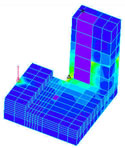7/31/2009· Accident Investigation & Reconstruction
Forensic Engineering Experts: Motorcycles
Motorcycles, like passenger cars, are capable of high speeds and must share the road with other vehicles. However, unlike passenger cars, motorcycles are capable of rapid accelerations, offer little protection to the operator during a collision and require special skills to maneuver effectively.



 Structural failure can often produce catastrophic results. In many cases, the damage seen after the accident is not indicative of the cause of the initial failure. Fortunately, based on physical evidence, an investigator can frequently determine how and why a structure failed. The most common reasons for a failure include defective materials, defective design, improper assembly, excessive or improper loading or a combination of these. Through testing and structural analysis, it is possible to determine the root cause of the failure and propose solutions to prevent such failures from reoccurring.
Structural failure can often produce catastrophic results. In many cases, the damage seen after the accident is not indicative of the cause of the initial failure. Fortunately, based on physical evidence, an investigator can frequently determine how and why a structure failed. The most common reasons for a failure include defective materials, defective design, improper assembly, excessive or improper loading or a combination of these. Through testing and structural analysis, it is possible to determine the root cause of the failure and propose solutions to prevent such failures from reoccurring.






